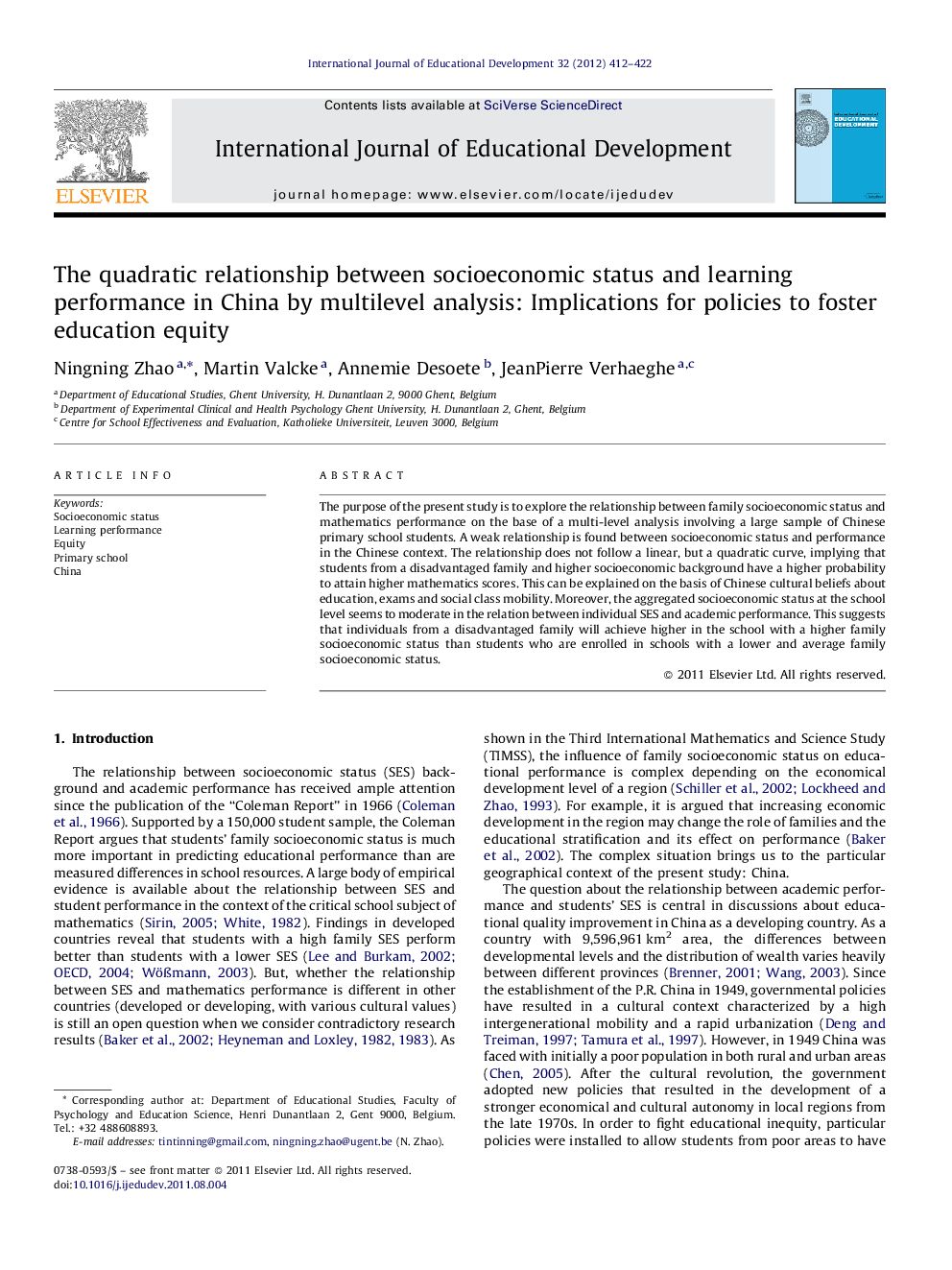| Article ID | Journal | Published Year | Pages | File Type |
|---|---|---|---|---|
| 356288 | International Journal of Educational Development | 2012 | 11 Pages |
The purpose of the present study is to explore the relationship between family socioeconomic status and mathematics performance on the base of a multi-level analysis involving a large sample of Chinese primary school students. A weak relationship is found between socioeconomic status and performance in the Chinese context. The relationship does not follow a linear, but a quadratic curve, implying that students from a disadvantaged family and higher socioeconomic background have a higher probability to attain higher mathematics scores. This can be explained on the basis of Chinese cultural beliefs about education, exams and social class mobility. Moreover, the aggregated socioeconomic status at the school level seems to moderate in the relation between individual SES and academic performance. This suggests that individuals from a disadvantaged family will achieve higher in the school with a higher family socioeconomic status than students who are enrolled in schools with a lower and average family socioeconomic status.
► We model the relationship between socioeconomic status (SES) and mathematics performance in elementary schools by multilevel analysis in developing country. ► The relationship between SES and math performance is not linear but quadratic: the students from lower SES family and students from higher SES family can achieve higher than the students from middle SES family. ► The average socioeconomic status at the school level seems to moderate in the relation between individual SES and academic performance.
